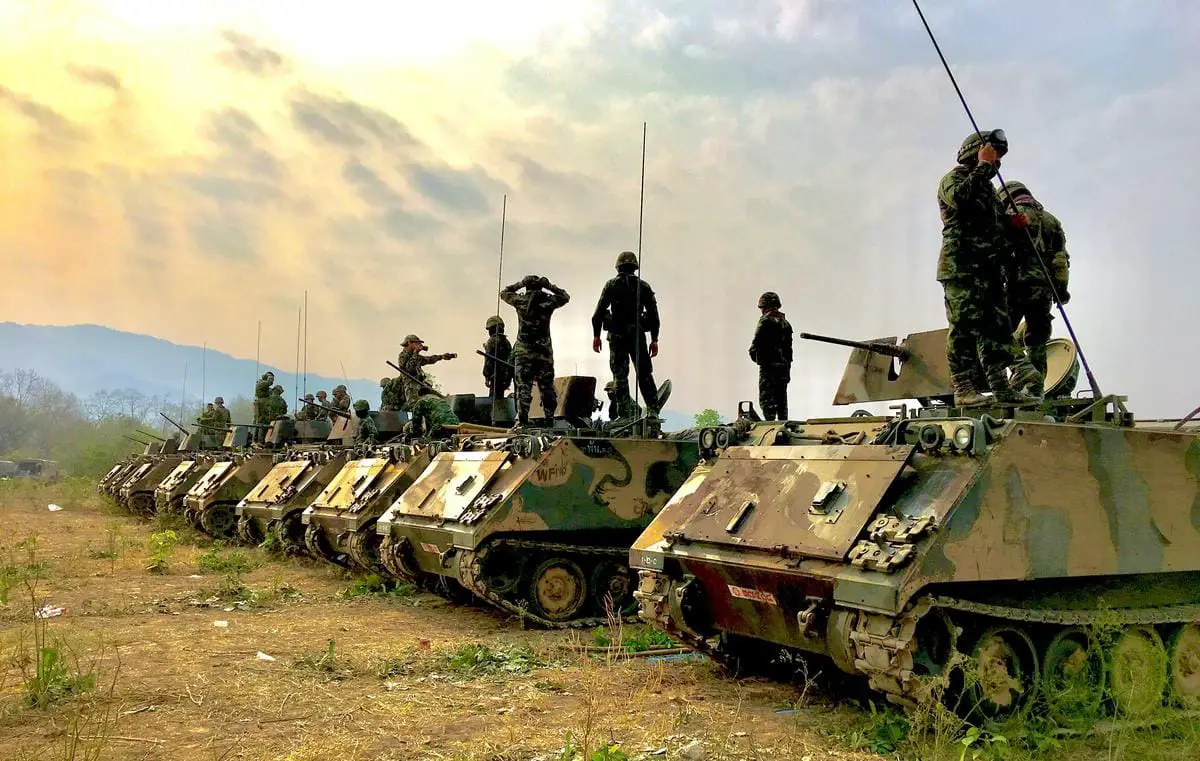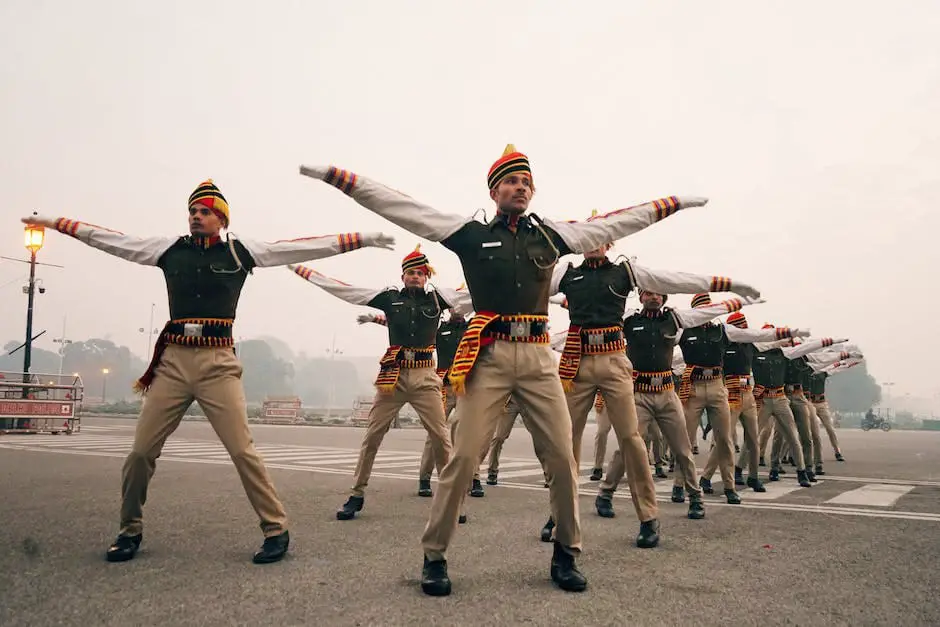Stepping into Ranger School requires an unparalleled level of physical endurance and conviction, as it challenges a person’s physical and mental capacities to extreme boundaries. The key to excelling lies in comprehending the high fitness standards, designing a specific training regime to surpass them, adopting appropriate nutritional strategies, and prioritizing injury prevention. This in-depth exploration encompasses everything from minimum and optimal standards for push-ups, sit-ups, chin-ups, five mile runs, and the combat water survival assessment to the formulation of an effective training plan. Furthermore, it delves into the significant role of nutrition in supporting muscle recovery and development, and methods to safely increase fitness levels.
Understanding the Ranger School Fitness Standards
Understanding Ranger School Fitness Standards
Ranger School is an intense physical and mental challenge that requires the highest level of fitness. To be prepared for Ranger school, you should be familiar with the specific physical fitness tests and standards and begin training months in advance.
Push-ups
The Ranger School’s physical fitness assessment commences with push-ups. For the test, soldiers are required to do as many correct push-ups as they can within a two-minute timeframe. The minimum standard for push-ups is 49 within 2 minutes, but the optimal standard is 80 within the same time frame.
Sit-ups
Just like push-ups, sit-ups also have a two-minute limit. The minimum requirement for sit-ups is 59 in 2 minutes. However, for optimal performance and to survive the rigors of Ranger School, the goal should be nearly 80 sit-ups in a 2-minute time span.
Chin-ups
Chin-ups require upper body strength and control. The minimum requirement for chin-ups is six to complete, but a more optimal performance would include 10 or more.
Five-Mile Run
The five-mile run tests your cardiovascular fitness and leg strength. A minimum passing time is 40 minutes, while a more optimal time, indicating superb physical conditioning, would be 35 minutes or less.
Combat Water Survival Assessment
The Combat Water Survival Assessment evaluates a Ranger candidate’s competency, physical conditioning, and courage in water. The assessment includes 15-meter swim in uniform and boots without any flotation device, equipment ditch and recovery, and walk off a three-meter platform and pull oneself up onto a rope. For this assessment, there are simply pass/fail criteria and it requires significant training and preparation.
Ranger School Physical Fitness Advice
The fitness standards set for the Ranger School illustrate the physical endurance, strength, and abilities required for success. Not only should aspiring Rangers meet these requirements, but they should aim to surpass them. This is since the physical requirements once in the Ranger School, such as long marches with heavy packs, very little sleep, lack of food, and non-stop stress, will exceed these standards. Therefore, unless a soldier is well above the required fitness level on entering Ranger School, his chances of failure are high due to the mental and emotional stress that will reduce his physical abilities.

Developing a Ranger-Specific Fitness Regimen
Preparation: Understanding the Ranger School Physical Demands
The Army Ranger School is notoriously challenging, physically and mentally, requiring a range of fitness abilities from running and swimming to carrying heavy loads over rugged terrain. A fitness regimen to prepare for Ranger School should ideally begin at least six months before attending the school. Strength training, cardio, swimming, and mountaineering should all be integral parts of your fitness routine. Here’s how to balance and rotate these elements for optimum preparation.
Cardiovascular Training: Building Endurance
Cardiovascular endurance is one of the foremost aspects needed for Ranger School. The Army’s suggested regimen involves running four to five days each week with an incrementally increasing mileage, starting from 2 miles and gradually going up to 5 miles each day. In addition, try to incorporate long-distance ruck marches into your training. These marches should be done with gradually increasing weight loads in your rucksack, starting with 35 pounds and gradually adding up to 70 pounds. Aim to achieve a 15-minute per mile pace, which is the standard required in Ranger School.
Strength Training: Enhancing Physical Power
Strength training is an essential component to meet the physical demands of Ranger School. This mainly involves body weight exercises such as push-ups, pull-ups, sit-ups, and chin-ups. Aim to gradually increase the number of repetitions you can perform. Simultaneously, add weight lifting to your regimen to build muscle endurance and strength. Focus on compound exercises like bench press, squats and deadlifts that involve multiple muscle groups and mimic the physical exertions you’ll face in Ranger School.
Swimming: Enhancing Aquatic Ability
Swimming is a crucial skill for prospective Rangers, as countless water-based operations and exercises are part of the curriculum. Start by swimming 200 meters and gradually increase your distance. Incorporate various stroke techniques into your routine, such as the freestyle, breaststroke, and side stroke. Not all swim training should be long distance, practice sprints as well, as these mimic the challenges in Ranger School.
Mountaineering: Building Adaptability
Mountaineering and climbing are frequent requirements in Ranger School, and you should prepare your body for these tasks. While not everyone has access to mountains, simple climbing exercises such as rope climbs or the use of climbing machines can prove useful.
Rotational Training: Balancing Workouts
A successful training regimen will balance and rotate these aspects effectively. Dedicate specific days of the week to each aspect. For instance, focus on cardio and strength training on alternate weekdays, with swimming and mountaineering on weekends. Ensure to have at least one day of active recovery to avoid overexertion and injury.
Nutrition: Fueling for Performance
Additionally, focus on proper nutrition and hydration. A healthy diet with plenty of proteins, carbohydrates, vitamins, and minerals helps aid recovery and provides necessary energy. Also, ensure to stay well hydrated, especially during longer cardio and strength training sessions.

Nutrition and Recovery for Enhanced Physical Performance
Understanding Role of Nutrition in Physical Performance
The role of nutrition in physical performance cannot be overstated. From maintaining muscle strength and endurance to supporting post-workout recovery, what you eat plays a crucial role in every aspect of your fitness journey. If your goal is to successfully complete the physical demands of ranger school, a balanced diet optimized for training should be a part of your preparation plan.
Proteins, Carbohydrates, and Fats: The Building Blocks of Nutrition
Proteins are essential for the growth and repair of muscle tissues. During intense training sessions, small tears occur in the muscles. Consuming high-quality proteins helps repair these tears, making the muscles stronger and more resistant to fatigue.
Carbohydrates are the primary fuel source for your muscles and brain. During high-intensity workouts, your body needs a substantial amount of carbohydrates to sustain energy and performance. Moreover, post-exercise, carbohydrates work along with proteins to expedite muscle recovery.
Fats, particularly unsaturated fats, are equally essential for physical fitness. They help absorb the fat-soluble vitamins A, D, E, and K, provide long-duration energy, and maintain healthy hormone levels.
Ideal Diet for Training: Timing and Quantity of Meals
The timing of meals is as critical as what goes in them. A meal or snack high in complex carbohydrates and moderate in protein approximately 1-3 hours before your workout will provide the necessary fuel for physical performance.
During your training, hydration is key. Electrolytes, along with water, can replace the minerals lost in sweat. Post-exercise, a balanced meal with a proper ratio of carbohydrates to proteins can expedite recovery.
As a general guideline, aim to consume 5-6 smaller meals a day instead of 3 large ones. This pattern not only helps in maintaining constant energy levels but also aids in timely recovery and muscle growth. The protein intake for most athletes should range around 1.2-2.0 grams per kilogram of body weight.
Nutrition and Recovery for Enhanced Performance
To improve your physical performance in ranger school, incorporate a variety of nutrient-dense foods in your meals. Lean proteins such as chicken, fish, and beans; complex carbohydrates from whole grains, fruits, and vegetables; and healthy fats from nuts, seeds, and avocados are excellent choices.
Remember, your body is your ultimate tool. Feed it well, rest it adequately, and it will serve you to its maximum potential. Proper nutrition, combined with regular exercise and rest, will help you meet the demanding physical requirements of ranger school.

Avoiding Injuries and Safely Increasing Fitness Levels
Understanding Overtraining Signs
Overtraining occurs when the individual practices hard physical work but fails to give the body enough time to recover. Noticeable symptoms often include excessive fatigue, insomnia, decreased appetite, mood swings, frequent illnesses or injuries, and a perceivable decline in workout performance. Pushing through these symptoms may lead to serious injuries. If you’re experiencing several of these signs, you need to rest until symptoms dissipate. To prevent overtraining, plan reasonable and achievable workout goals, ensure to warm up before starting, and keep hydration levels stable throughout the workout. Especially watch out for your body’s signals to stop, when you feel pain, dizziness, or extreme difficulty in catching breath during exercises as they could be signs of an impending injury.
Relevance of Rest and Recovery
Resting is equally important as exercising, aiding in the muscle repair and growth process. Post-exercise, muscles undergo tissue breakdown and inflammation, which can be resolved with adequate rest time. For muscle growth, consider a good night’s sleep of 7-9 hours. Apart from this, incorporate rest days into your fitness routine, dedicating one or two days a week to active recovery sessions like light cardio, stretching, or yoga.
Safely Pushing Your Limits
To safely increase your workout intensity, ensure a gradual progression. For instance, if you’re into running, increase the distance by 10% each week to allow your body to adapt. Likewise, for strength training like lifting weights, start with lighter weights initially and progressively move to heavier ones. Regularly switch up your workout routines to challenge different muscle groups and prevent plateauing. Trying high-intensity interval training (HIIT) for short durations can boost endurance and burn fat effectively. Warm up pre-workout and cool down post-workout to reduce the risk of injuries and improve flexibility.
Resilience and Longevity in Physical Fitness
Longevity and resilience in physical fitness go hand-in-hand, leading to optimal health and disease prevention in the long run. This implies not just focusing on cardiovascular fitness or strength training, but also improving flexibility, balance, and mental wellness. Doing regular exercises, eating balanced diets, managing stress effectively, and maintaining a positive attitude are crucial aspects of long-term physical fitness and injury prevention.
Implementing Proper Nutrition
Proper nutrition plays a pivotal role in recovery and injury prevention. Consume a balanced diet rich in protein, carbohydrates, and healthy fats to fuel your workouts and support muscle recovery. Hydration too is key, as dehydration can decrease performance, amplify feelings of fatigue, and increase the risk of injuries. Consider taking sport-specific nutrition advice from professionals to maximize performance and recovery.
Benefiting from Physical Therapy and Regular Check-ups
Regular health check-ups can help in early identification of potential issues, thereby preventing serious injuries. Physical therapy can also tremendously aid in recovering from injuries, strengthening the muscles, and increasing flexibility, all of which collectively reduce the risk of future injuries.
Fitness does not equate to overstraining the body
It involves balanced workouts, proper nutrition, sufficient rest, and active listening to your body signs. This will ensure a safe, effective fitness journey and mitigate the occurrence of potential injuries at ranger school physical fitness training.

Therefore, preparing for Ranger School extends beyond physical training. It’s also about understanding your body’s nutritional needs, recognizing signs of overtraining, and knowing how rest and recovery contribute to your longevity and resilience. The combination of learning these crucial aspects, along with an intense physical regimen, helps shape a well-informed, top-performing Ranger candidate. By meeting and surpassing these required fitness standards and incorporating these practices into a daily routine, one can undoubtedly tread closer to their aspiration of successfully graduating from Ranger School.

